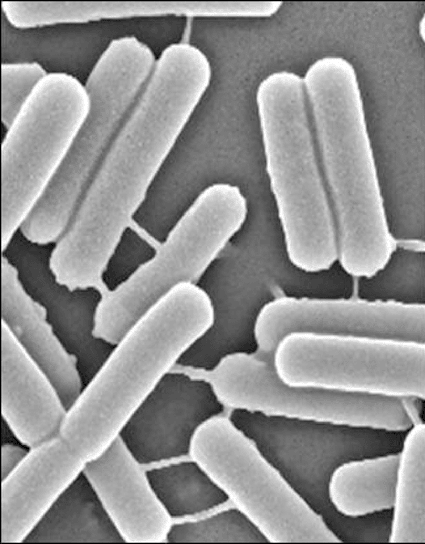Bacteria Communicate by Exchanging Molecules Through a Nanotube Network
By LabMedica International staff writers
Posted on 10 Mar 2011
A publication described how bacteria communicate by exchanging molecular messages through an intricate network of nanotubes.Posted on 10 Mar 2011
Investigators at the Hebrew University of Jerusalem (Israel) used fluorescent and electron microscopy to study interaction between bacterial cells in cultures of Bacillus subtilis.

Image: Scanning electron micrograph of B. subtilis (photo courtesy of the Ben-Yehuda Laboratory).
They reported in the February 18, 2011, issue of the journal Cell that their observations had revealed the existence of variously sized tubular extensions bridging neighboring cells, serving as a route for exchange of intracellular molecules. This network of nanotubes provided a structural organization for bacterial communication, which was known to take place primarily via secreted extracellular factors.
The investigators visualized transfer of cytoplasmic fluorescent molecules between adjacent cells. Coculturing strains of B. subtilis harboring different antibiotic resistance genes demonstrated that molecular exchange enabled cells to acquire transiently nonhereditary resistance. Furthermore, DNA plasmids could be transferred from one cell to another, thereby conferring hereditary features to recipient cells.
Electron microscopy revealed the existence of variously sized tubular extensions bridging neighboring cells. These nanotubes also formed in an interspecies manner, between B. subtilis and Staphylococcus aureus, and even between B. subtilis and the evolutionary distant bacterium Escherichia coli.
"Bacteria are known to communicate in nature primarily via the secretion and receipt of extracellular signaling molecules,” said senior author Dr. Sigal Ben-Yehuda, professor of microbiology and molecular genetics at the Hebrew University of Jerusalem. "This mechanism can facilitate the acquisition of new features in nature, such as antibiotic resistance. In this view, gaining a better molecular understanding of nanotube formation could lead to the development of novel strategies to fight against pathogenic bacteria.”
Related Links:
Hebrew University of Jerusalem














